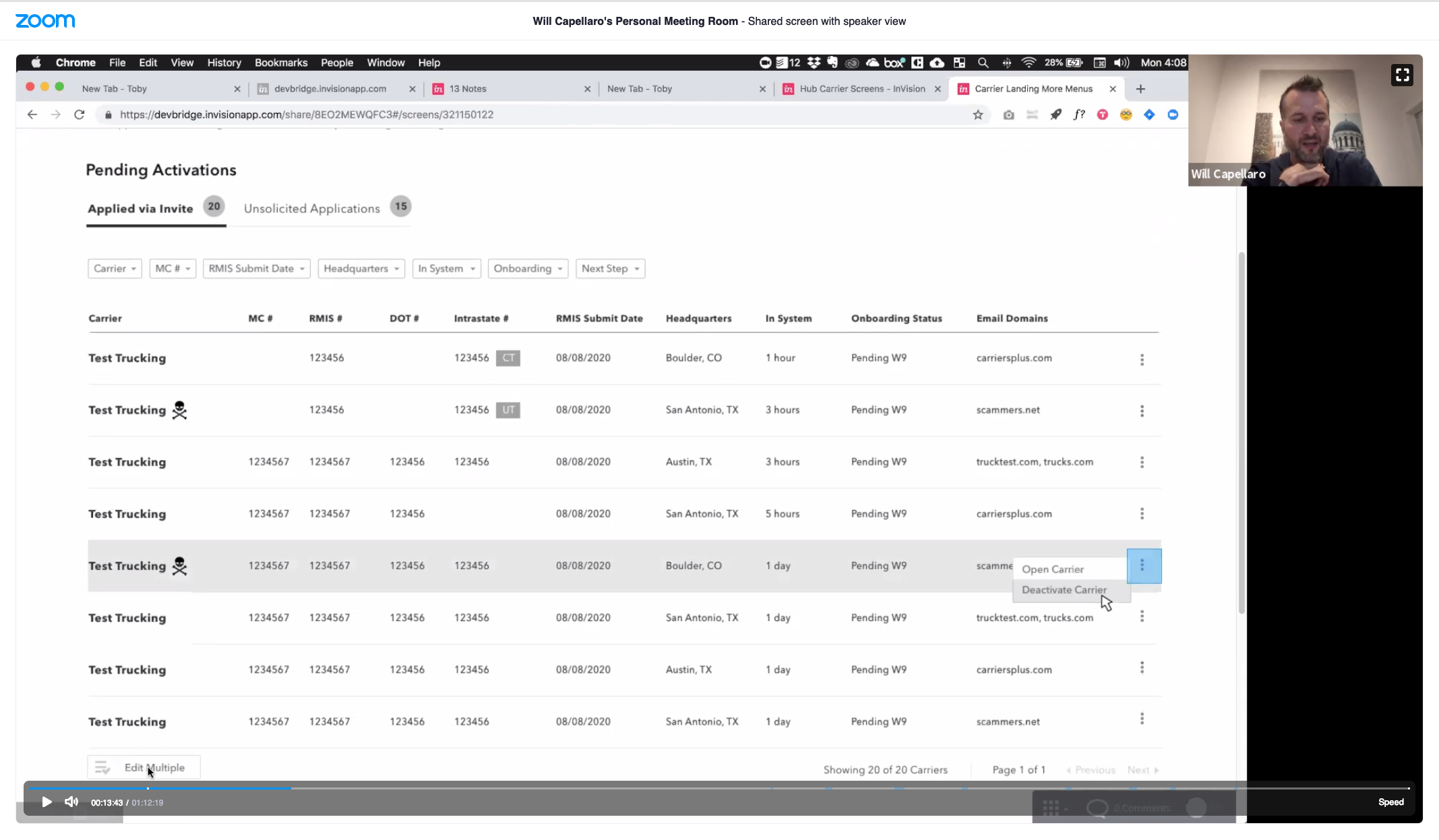Hub Group

The Product
A data master system housing 40,000+ freight carrier records.My Role
Lead Designer & UX Researcher, paired with another designer working in parallel on other features.The Challenge
Hub Group, a global leader in shipping logistics, faced an existential challenge: how to incorporate AI into its complex workflows for dispatching freight across rail, road, and sea. At the time, every freight decision was made by humans—often under intense time pressure while navigating outdated software. Startups unburdened by technological debt were threatening Hub Group’s position.The solution wasn’t as simple as “add AI.” AI relies on clean, accessible data, but Hub Group’s systems were a patchwork of legacy tools, some dating back decades. My consultancy was brought in to fast-track solutions to modernize their infrastructure. This effort culminated in two key products:
-
A dispatch dashboard with AI-suggested freight routes.
-
A platform to manage freight carriers (my project focus).
Key Findings
-
Fragmented Tools: Compliance officers had to navigate multiple systems, ranging from outdated green-screen terminals to clunky web apps.
-
Inefficiency: Much of their work involved “puzzle-solving,” hunting for data scattered across disparate tools.
-
Steep Learning Curve: Onboarding new employees required extensive training due to inconsistent interfaces.
-
Moments of Excitement: Some tasks, like detecting fraudulent carriers, felt like detective work and were deeply engaging.
▼ Montage of their legacy systems

Design Process
After synthesizing my research, I identified the core workflow: carrier approval and rejection. From there, I began designing wireframes to streamline this process.Key Design Decisions
-
Task-Focused Navigation: Users frequently toggled between data points, so I avoided rigid sequential flows or open dashboards. Instead, I opted for discrete pages, each tailored to specific tasks.
-
Data Tables: Despite the outdated feel, data tables were familiar and functional for users. I refined and modernized their appearance while keeping the format intact.
-
Incremental Validation: Early prototypes were shared with users, and their feedback confirmed these design choices.
The Result: Users dubbed the design a “magic wand”—a tool that understood and addressed their unique needs. While they were thrilled by the modern interface, I made sure to level-set expectations, reminding them that even modest upgrades would feel transformative compared to their legacy systems.
▼ User validation session conducted via Zoom.

Validation & Iteration
User feedback was the cornerstone of this project. I conducted frequent validation sessions via Zoom, presenting interactive prototypes and refining designs based on their input. These sessions were recorded for further analysis and structured to foster candid feedback.Impact of Validation
-
Consolidated five legacy apps into one modern system with two key functions: carrier management and compliance.
-
Simplified workflows, reducing onboarding time for new employees.
- Increased user confidence in the system’s ability to support critical decision-making.
▼ High-fidelity design

Outcomes
My work concluded after delivering high-fidelity clickable prototypes, validated through rigorous usability testing. While I typically see projects through to launch, in this case, I front-loaded the work to ensure engineers had everything needed to bring the designs to life.Impact Beyond Compliance
-
The new system empowered the compliance team to work more efficiently, indirectly boosting the productivity of hundreds of brokers who relied on their decisions to schedule freight deals.
-
Quantitatively, Hub Group reduced five fragmented systems to one cohesive platform, paving the way for future AI integration.
-
Five years after the project’s completion, Hub Group’s stock price has doubled—a testament to the company’s successful digital transformation, supported in part by this initiative.
Reflection
This project exemplified the power of human-centered design in transforming outdated workflows. By embedding myself in the users’ world, I not only designed a functional tool but also gave overworked employees a system that truly supported their needs—a modern “magic wand” for their critical work.